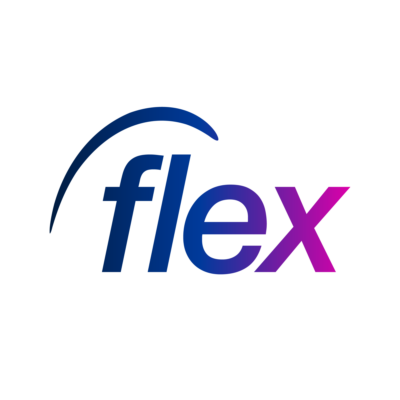
- Understanding the vendor compliance framework
- Assessing and categorising vendor risk
- Building a robust vendor compliance programme
- Technology solutions for vendor compliance management
- Monitoring and maintaining vendor compliance
- Overcoming common vendor compliance challenges
- Building collaborative vendor relationships
- Future trends in vendor compliance for 2025 and beyond
- Streamline your compliance with Indeed Flex
Vendor compliance, in relation to workforce management, has become essential to managing business operations effectively, directly influencing risk management and adherence to regulatory requirements. With 78% of organisations reporting third-party breaches in recent years, the need for robust compliance frameworks is as important now as it’s ever been. As we steadily move through 2025, changing regulations and technological advancements are reshaping how businesses manage vendor relationships.
Understanding the vendor compliance framework
Effective vendor compliance programmes balance regulatory requirements with operational practicality, requiring clear documentation, risk-aware processes, and measurable performance indicators. Modern frameworks typically integrate four elements: policy governance, due diligence protocols, contractual safeguards, and continuous monitoring systems. These components work together to address both immediate operational risks and long-term strategic objectives.
Regulatory priorities shaping 2025 requirements
New data protection directives and supply chain transparency laws will dominate compliance agendas in 2025. The EU’s Corporate Sustainability Reporting Directive (CSRD) and upcoming UK digital operational resilience regulations demand granular visibility into vendor operations. Organisations must now track not just direct vendors but also fourth-party subcontractors — particularly in industries handling sensitive data.
- Policy alignment: The vast majority of compliance failures stem from misaligned internal-external standards
- Geographical variations: Asia-Pacific regions require more documentation than European counterparts
- Industry-specific mandates: Healthcare vendors face 3× more audit requirements than retail suppliers
Assessing and categorising vendor risk
Risk stratification enables organisations to allocate resources effectively, focusing intensive due diligence on high-impact partnerships. The Financial Conduct Authority recommends categorising vendors by: financial exposure level, data access requirements, and replacement complexity.
Implementing tiered assessment methodologies
Leading organisations combine quantitative scoring models with qualitative evaluations. A recent Panorays study found companies using hybrid assessment approaches reduced compliance incidents by 41% compared to those relying solely on checklist audits.
| Risk Tier | Assessment Frequency | Required Documentation |
|---|---|---|
| Critical | Quarterly | SOC 2 reports, financial audits |
| High | Biannually | Insurance certificates, GDPR compliance proof |
| Medium | Annually | Service level agreements |
Building a robust vendor compliance programme
Successful programmes institutionalise compliance through structured workflows rather than ad-hoc checks. Begin with policy development that addresses both mandatory regulations and voluntary standards relevant to your industry.
Five implementation phases
- Conduct baseline assessments of existing vendor relationships
- Develop risk-adjusted contract templates with termination clauses
- Implement automated onboarding checklists for new vendors
- Establish cross-departmental compliance committees
- Integrate compliance metrics into executive reporting
The HIPAA Journal reports organisations with documented vendor management procedures resolve compliance issues 37% faster than those without formal frameworks.
Technology solutions for vendor compliance management
Advanced compliance platforms now offer predictive analytics, automated document expiry alerts, and AI-driven risk scoring. These tools help organisations manage man more vendors with the same compliance staff compared to manual methods.
Key technological capabilities
- Real-time compliance dashboards showing vendor status across regions
- Blockchain-based audit trails for critical documentation
- Machine learning models predicting contract renewal risks
The right digital workforce platform provides similar real-time visibility and control for temporary staffing programmes through features like automated shift logging and performance analytics.
Monitoring and maintaining vendor compliance
Continuous monitoring now accounts for the majority of successful compliance programmes’ operational budgets. Shift from annual audits to dynamic assessments using: automated data validation, surprise site inspections, and subcontractor compliance sampling.
Performance metric framework
Track these essential indicators:
- Documentation submission latency rates
- Incident response times for critical vendors
- Percentage of contracts with updated compliance clauses
Organisations applying these principles, as detailed in Indeed Flex’s agency network guide, typically achieve 94% audit readiness compared to 67% in less structured programmes.
Subscribe to our newsletter
Stay ahead of employment updates and workforce management tips. Subscribe to our newsletter for expert insights straight to your inbox.
Overcoming common vendor compliance challenges
Resource constraints present the main obstacle, with insufficient staff for vendor oversight duties. However, this can be addressed through:
- Centralised vendor portals, reducing duplicate documentation requests
- Risk-based sampling replacing verification for low-tier vendors
- Automated reminders cutting follow-up time
UpGuard research shows organisations using these strategies maintain compliance, with 35% fewer full-time staff compared to traditional approaches.
Building collaborative vendor relationships
Transform compliance from a policing activity into a shared objective by co-developing improvement plans with strategic vendors. Provide compliance training portals and recognise top performers through preferred partner status.
Effective engagement strategies
- Quarterly compliance review workshops
- Joint incident response simulations
- Transparent performance benchmarking
Ultimately, shared success metrics drive better outcomes for both businesses and workers.
Future trends in vendor compliance for 2025 and beyond
Three developments will dominate:
- AI-powered ‘always-on’ compliance monitoring replacing periodic audits
- ESG requirements influencing vendor selection decisions
- Blockchain becoming standard for cross-border compliance verification
These innovations, explored in depth by Sprinto’s risk management analysis, suggest compliance teams will shift from auditors to strategic advisors within 2-3 years.
Streamline your compliance with Indeed Flex
Simplify your workforce management and enhance compliance by partnering with Indeed Flex. Explore how our innovative platform can help you maintain operational control while reducing resource strain—request a demo today.








